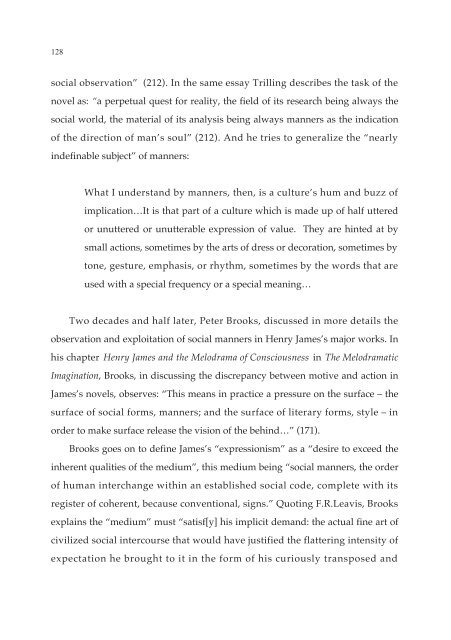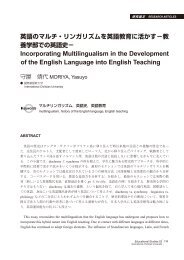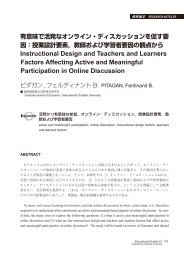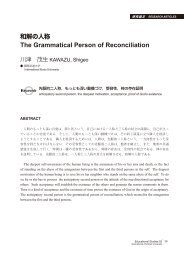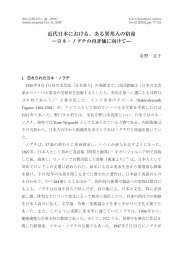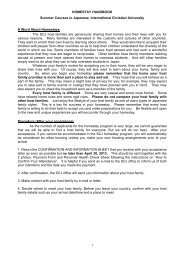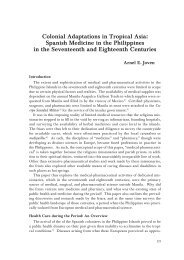Tea and Henry James's 'Scenic Method' in The Awkward ... - subsite
Tea and Henry James's 'Scenic Method' in The Awkward ... - subsite
Tea and Henry James's 'Scenic Method' in The Awkward ... - subsite
Create successful ePaper yourself
Turn your PDF publications into a flip-book with our unique Google optimized e-Paper software.
128<br />
social observation” (212). In the same essay Trill<strong>in</strong>g describes the task of the<br />
novel as: “a perpetual quest for reality, the field of its research be<strong>in</strong>g always the<br />
social world, the material of its analysis be<strong>in</strong>g always manners as the <strong>in</strong>dication<br />
of the direction of man’s soul” (212). And he tries to generalize the “nearly<br />
<strong>in</strong>def<strong>in</strong>able subject” of manners:<br />
What I underst<strong>and</strong> by manners, then, is a culture’s hum <strong>and</strong> buzz of<br />
implication…It is that part of a culture which is made up of half uttered<br />
or unuttered or unutterable expression of value. <strong>The</strong>y are h<strong>in</strong>ted at by<br />
small actions, sometimes by the arts of dress or decoration, sometimes by<br />
tone, gesture, emphasis, or rhythm, sometimes by the words that are<br />
used with a special frequency or a special mean<strong>in</strong>g…<br />
Two decades <strong>and</strong> half later, Peter Brooks, discussed <strong>in</strong> more details the<br />
observation <strong>and</strong> exploitation of social manners <strong>in</strong> <strong>Henry</strong> James’s major works. In<br />
his chapter <strong>Henry</strong> James <strong>and</strong> the Melodrama of Consciousness <strong>in</strong> <strong>The</strong> Melodramatic<br />
Imag<strong>in</strong>ation, Brooks, <strong>in</strong> discuss<strong>in</strong>g the discrepancy between motive <strong>and</strong> action <strong>in</strong><br />
James’s novels, observes: “This means <strong>in</strong> practice a pressure on the surface – the<br />
surface of social forms, manners; <strong>and</strong> the surface of literary forms, style – <strong>in</strong><br />
order to make surface release the vision of the beh<strong>in</strong>d…” (171).<br />
Brooks goes on to def<strong>in</strong>e James’s “expressionism” as a “desire to exceed the<br />
<strong>in</strong>herent qualities of the medium”, this medium be<strong>in</strong>g “social manners, the order<br />
of human <strong>in</strong>terchange with<strong>in</strong> an established social code, complete with its<br />
register of coherent, because conventional, signs.” Quot<strong>in</strong>g F.R.Leavis, Brooks<br />
expla<strong>in</strong>s the “medium” must “satisf[y] his implicit dem<strong>and</strong>: the actual f<strong>in</strong>e art of<br />
civilized social <strong>in</strong>tercourse that would have justified the flatter<strong>in</strong>g <strong>in</strong>tensity of<br />
expectation he brought to it <strong>in</strong> the form of his curiously transposed <strong>and</strong>


